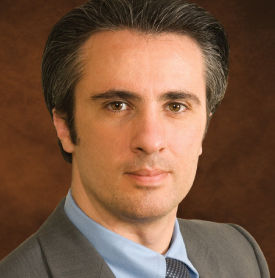When it comes to the embedded fees issue, investor groups and the mutual fund industry are far from agreement. At a recent roundtable held by the Ontario Securities Commission (OSC) investor groups called for an outright ban on these fees, while mutual fund distributors and manufacturers argued for maintaining investor choice and increased disclosure.The OSC held the meeting to discuss the issues raised in a paper published in December by the Canadian Securities Administrators (CSA), which examines the mutual fund fee structure in Canada and looks into potential investor protection issues. The June 7 OSC meeting was just the first of what could be a number of future meetings.
“One of the things that I personally am hoping to achieve…is that we, as regulators, get a sense of where we should go next in terms of what are more questions we should be asking, more data we should be gathering, more issues that we should be exploring,” said Mary Condon, vice chair to the OSC.
At the roundtable, manufacturers acknowledged that average investors remain relatively uninformed about the cost of financial advice, despite disclosures with point of sale FundFacts. But Peter Intraligi, president of Invesco Canada, said new disclosures coming through the second phase of the CSA’s client relationship model (CRM-2) will improve fee transparency to the point where there is no need to ban embedded fees.
“As a result, the method of compensation, whether it’s paid through the fund company on behalf of the investor or whether the investor pays it directly to their advisor [through fee-for-service], will no longer give rise to an implied conflict of interest,” Intraligi said. “Ultimately, the investor walks away informed and fully capable of determining for themselves whether they’re getting full value for their money.”
Under CRM-2, investors will see the actual amount advisors are paid for all mutual fund fees in dollars and cents and will receive enhancements to account statements, including percentage returns for their accounts over one, three, five and 10 years since the account was opened. The new requirements took effect on July 15, 2013 but will be phased in over a three-year period to give firms time to develop and implement the necessary systems for the new disclosures.
Intraligi told the OSC panel that getting rid of embedded fees will be detrimental to smaller investors and would increase the cost of advice anywhere from 25 to 150 per cent for the average investor.
But Marian Passmore, associate director of The Canadian Foundation for Advancement of Investor Rights (FAIR), said that removing embedded commissions would actually allow investors to negotiate what they pay advisors.
As it now stands, Passmore said leaving embedded commissions in mutual funds could result in higher costs and less optimal results for the consumer because some advisors would choose funds that pay them the highest fees.
Banning embedded fees would also lead to more competition in the marketplace, she said.
“[Removing embedded commissions] will spur the development of alternative structures or systems to deliver advice, and there will be access to the types of advice that Canadians want for a price that they are willing to pay,” said Passmore. “The market will evolve.”
But some came back to the argument that smaller investors will be the ones to lose out if embedded fees are removed.
“What would happen to those individuals with smaller accounts?” asked Joanne De Laurentiis, president and CEO of the The Investment Funds Institute of Canada. “If they had no place to go with their first $10,000 when they start to invest, what happens there? I think that’s the question we can’t lose sight of. Those individuals may not, in fact, ever invest.”
Greg Pollock, president and CEO of Advocis, The Financial Advisors Association of Canada, said the majority of advisors work with “Main Street Canadians,“those who put in an average $2,500 to $2,800 a year into all investments. If advisors charge separately for every service they now receive under a fee-for-service model, “financial advice would become unaffordable, and therefore inaccessible to the average Canadian.”
Pollock said the United Kingdom, which banned commission-based investments earlier this year, has already lost one quarter of its advisors and about 5.5 million U.K. consumers will no longer be able to access financial advice.
Removing embedded commissions in Canada would just exclude those who need advice, and run counter to government calls for greater individual accountability of their financial futures, he said.
While disclosure is key, a number of other presenters outlined the importance of investor education, saying one won’t work without the other.
“We can have all the disclosure we want, but if the investor doesn’t know where to look for it or how to interpret it, it really doesn’t get us anywhere,” said Atul Tiwari, managing director and head of Canada for Vanguard Investments, a large seller of ETFs in Canada. “There has got to be more education so that they understand the negative impact and high costs on their long-term net returns.”
But while the cost of owning mutual funds is at the heart of these discussions, investors should be entitled to know the costs of all investments, not just mutual funds, said Sian Burgess, senior vice president, Fund Oversight, Fidelity Investments Canada ULC.
“I think if you’re worried that mutual fund investors don’t understand mutual fund fees, do you think Canadians think they pay anything for GICs? I can assure you, they think they don’t pay anything. Similarly with segregated funds. There needs to be more fee transparency around some of these other products. We are so focused on a product that is so incredibly well-regulated now where there’s so much disclosure,” said Burgess.
Other investments
She urged the OSC to encourage the ministers of finance to bring in the same level of transparency across all investments.
“If banking regulators, insurance regulators and securities regulators all work together or were all under one umbrella, imagine the work that could be done to increase investor awareness of fees. Wouldn’t we have a better outcome than simply regulating mutual fund fees alone?”
Meanwhile, Passmore said do-it-yourself investors should not have to pay embedded commissions if they opt to bypass the dealer-advisor channel, noting that discount brokerages are not allowed to provide DIYers with personalized advice.
Paul Bates, chair of the OSC Investor Advisory Panel, said regulators have an obligation to move forward with new disclosures because the industry may not move as quickly as it should on its own.
He also said to wait to see how things eventually shake out in other countries that have already banned embedded commissions is unnecessary. He said regulators can say they want to ban embedded fees five years from now and during that time see what happens in other jurisdictions.
“But I think to put off the decision is unnecessary,” said Bates. “The research is complete. There’s plenty of evidence that this will evolve the way it should.”









